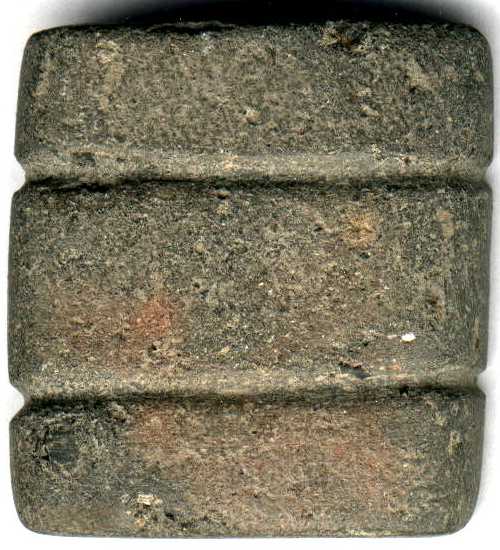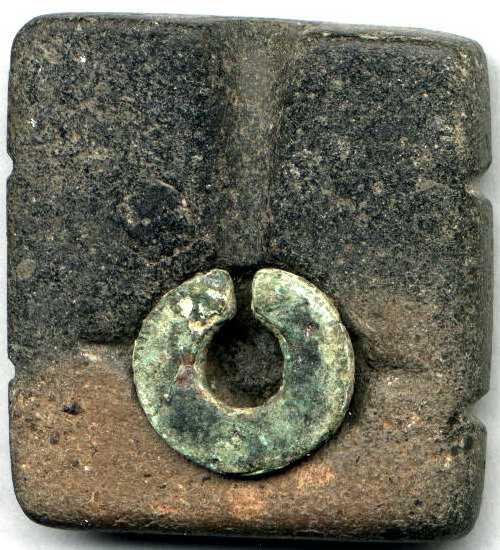| SPECIFICATIONS | ||
| Material | Stone | |
| Type | Seal | |
| Height | 44. mm | |
| Width | 41. mm | |
| Thickness | 10.5 mm | |
| Weight | 31.47 gms | |
| Shape | Rectangular | |
| Edge | smooth | |


|

| 
| |||||||||||||||||||
|
The very smooth stone slab has very flat obverse and a reverse which
is rounded at edge. It was probably placed next to another flat slab
and string tied across the grooves to hold the two slabs
together. Molten metal is poured from the top along the vertical
channel. After the metal was cooled and solidified the slabs were
separated and the ring was lifted out with a tool using the small
notches on either side of the circular ring.
Illustrated on the right is the ring-mould with a lead ring which
fits perfectly in it. The inner face of the ring is curved as in the
mould. The upper surface is flat as would be the case if the facing
slab attached was flat. | 
|
This is probably a mould for an ear-ring or pendant. The OBRW illustrates very similer Moulds (L3-L5) which had beem used to cast sets of silver Punch Mark coins and also Lakshmi Plaques.
The Seal was scanned at 300 dpi and displayed at 150 dpi. It was obtained in 2001 December directly from farmer who found it via Mr A. Ratnayaka a collector in Katharagama, Lanka.